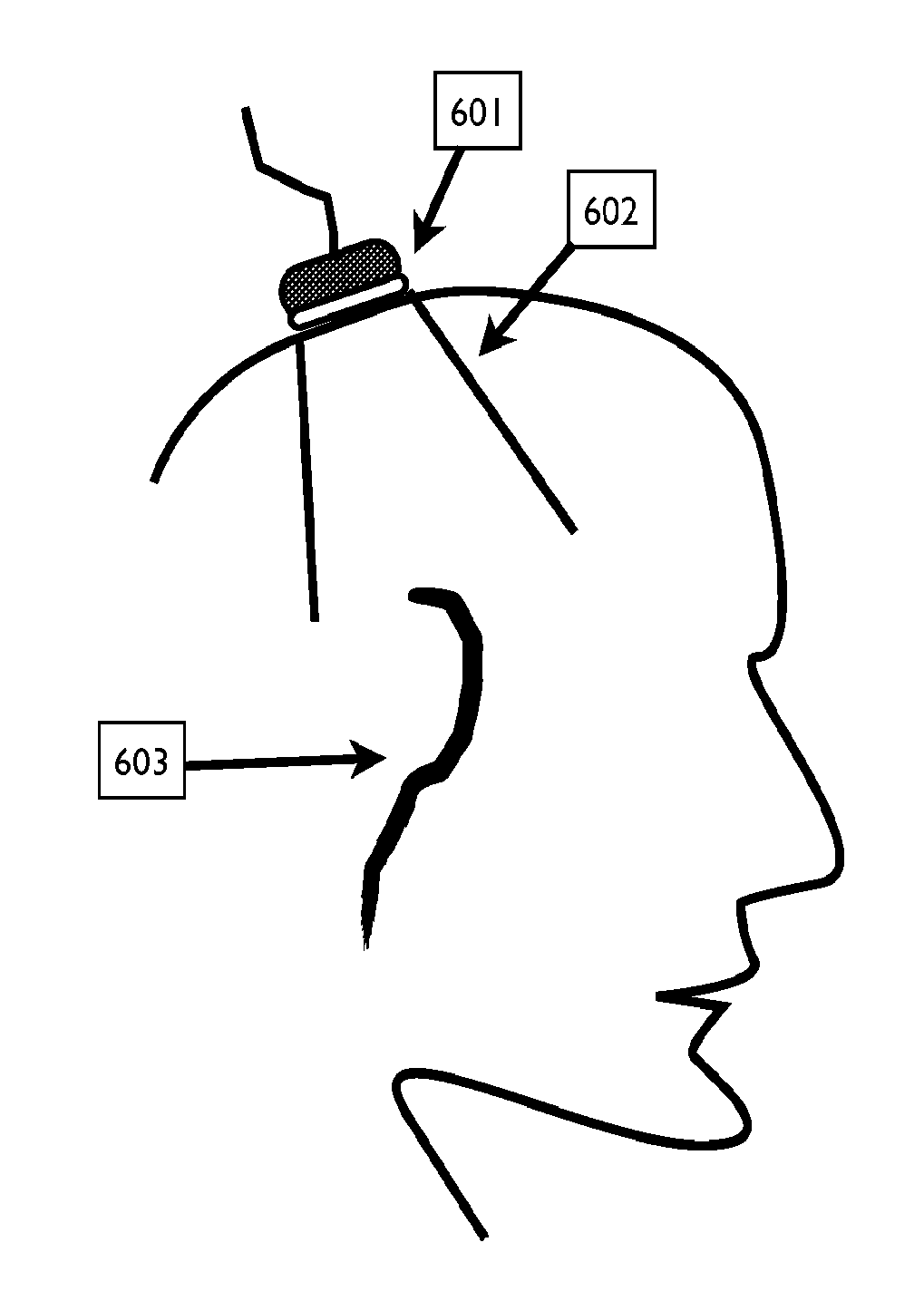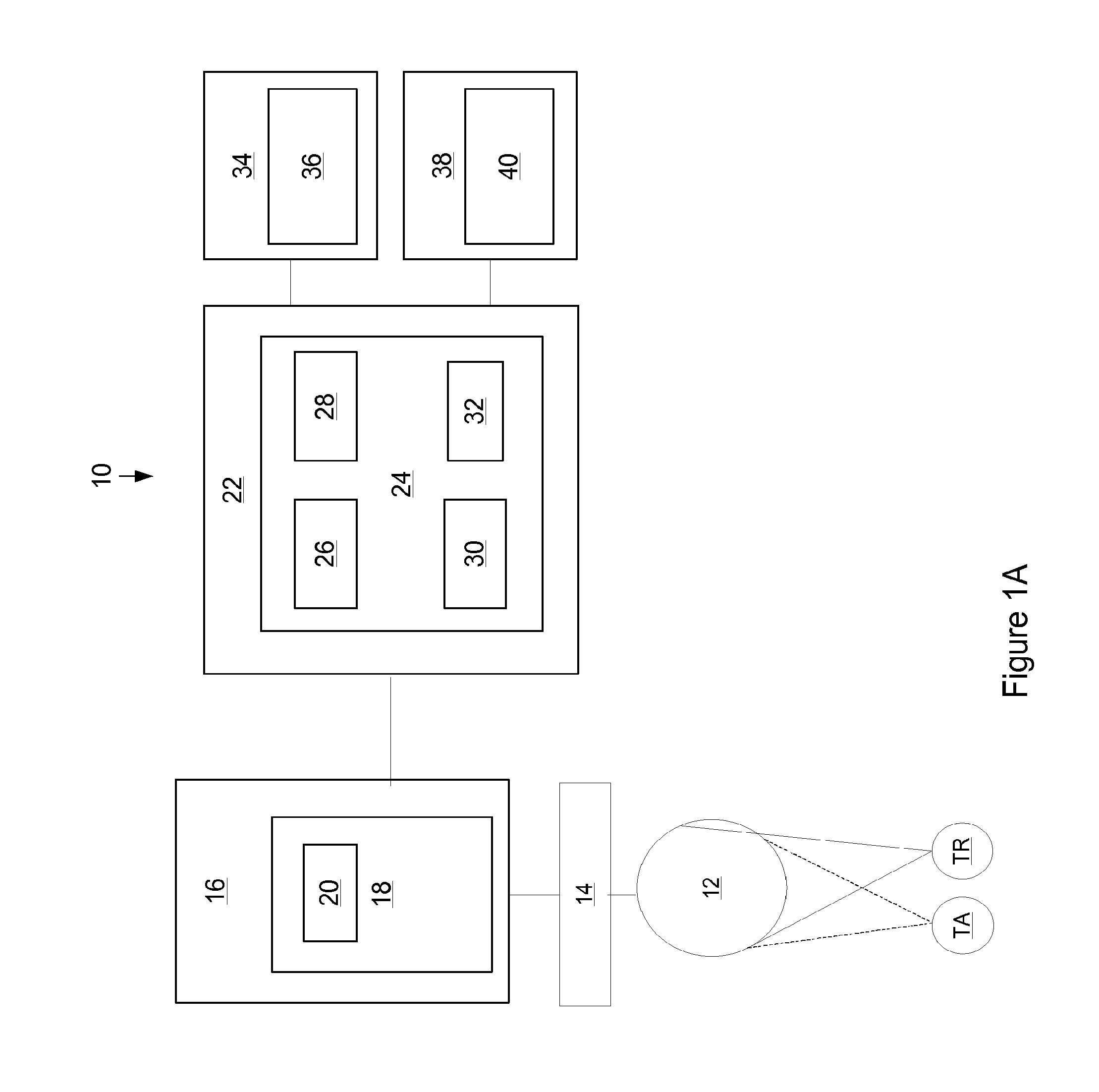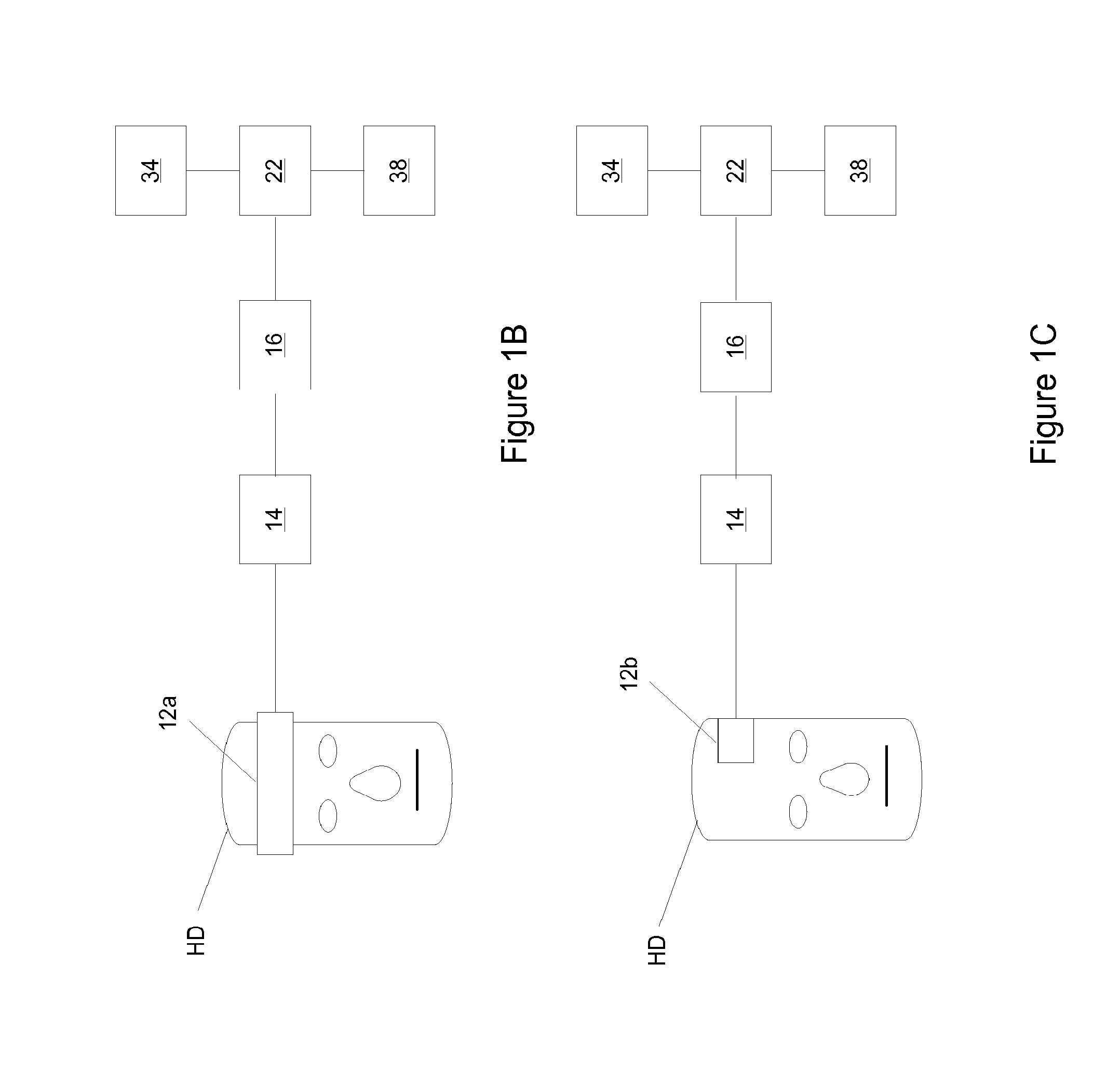Device and Methods for Targeting of Transcranial Ultrasound Neuromodulation by Automated Transcranial Doppler Imaging
- Summary
- Abstract
- Description
- Claims
- Application Information
AI Technical Summary
Benefits of technology
Problems solved by technology
Method used
Image
Examples
Embodiment Construction
[0048]The embodiments as described herein can be used in one or more of many ways to beneficially treat neurons of a subject with ultrasound energy. The neurons may comprise neurons of a brain of a subject, and the ultrasound can be delivered transcranially, for example. The embodiments as described herein can be beneficially combined to provide method and apparatus to treat modulate neuronal activity of a target site of the subject, and the target site may comprise a neuronal site. In many embodiments, high frequency components of ultrasound are combined to provide low frequency vibrational energy to modulate the target site. Alternatively or in combination, mapping of blood vessels can be used to identify target locations by spatial reference to blood vessels.
[0049]In many embodiments, transcranial ultrasound neuromodulation protocols are used to direct ultrasound energy to a targeted region of the brain of a human or animal based on identified locations in the brain of the patien...
PUM
 Login to View More
Login to View More Abstract
Description
Claims
Application Information
 Login to View More
Login to View More - R&D
- Intellectual Property
- Life Sciences
- Materials
- Tech Scout
- Unparalleled Data Quality
- Higher Quality Content
- 60% Fewer Hallucinations
Browse by: Latest US Patents, China's latest patents, Technical Efficacy Thesaurus, Application Domain, Technology Topic, Popular Technical Reports.
© 2025 PatSnap. All rights reserved.Legal|Privacy policy|Modern Slavery Act Transparency Statement|Sitemap|About US| Contact US: help@patsnap.com



